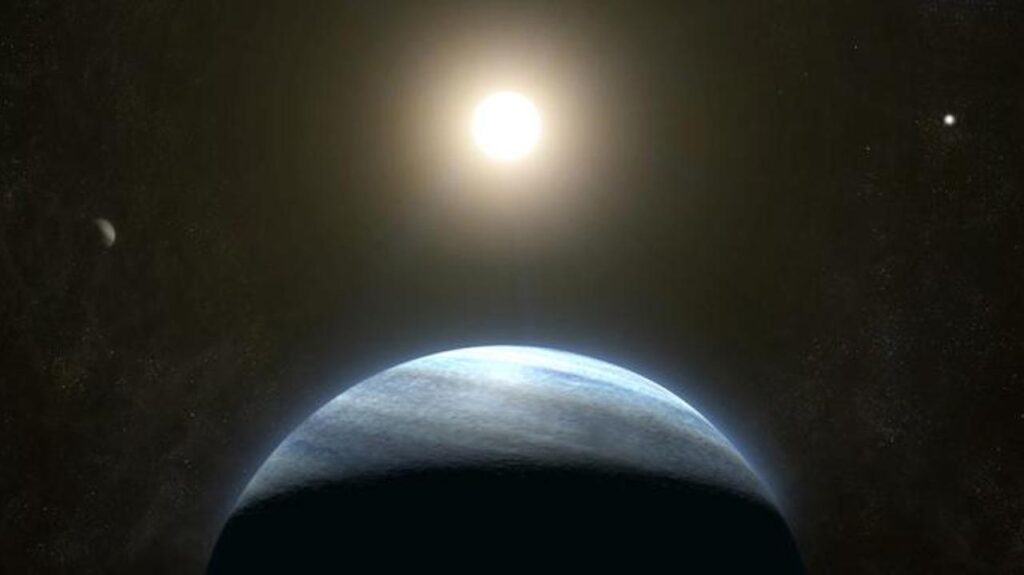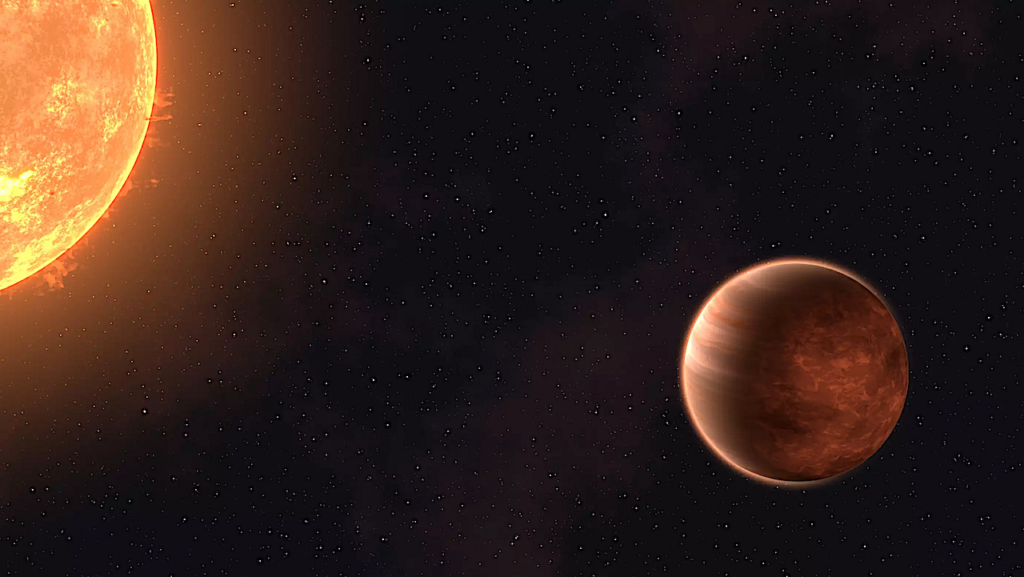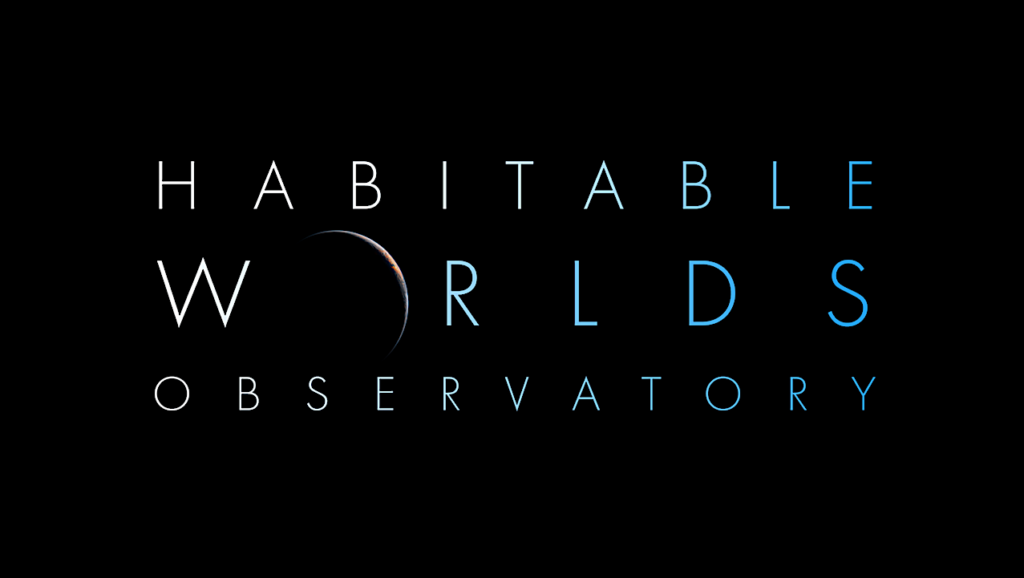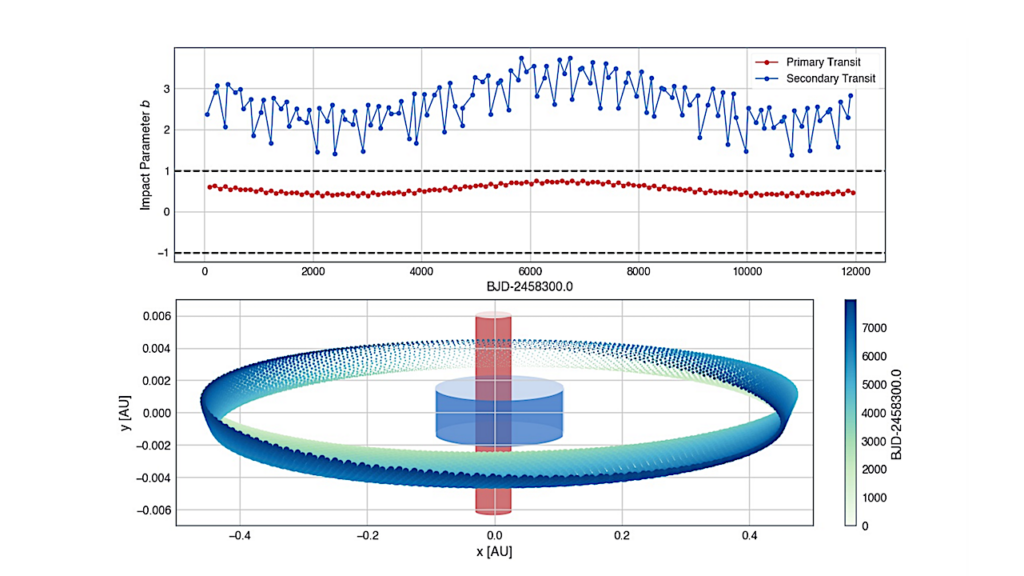A Secular Solar System Resonance That Disrupts The Dominant Cycle In Earth’s Orbital Eccentricity (g2-g5): Implications For Astrochronology
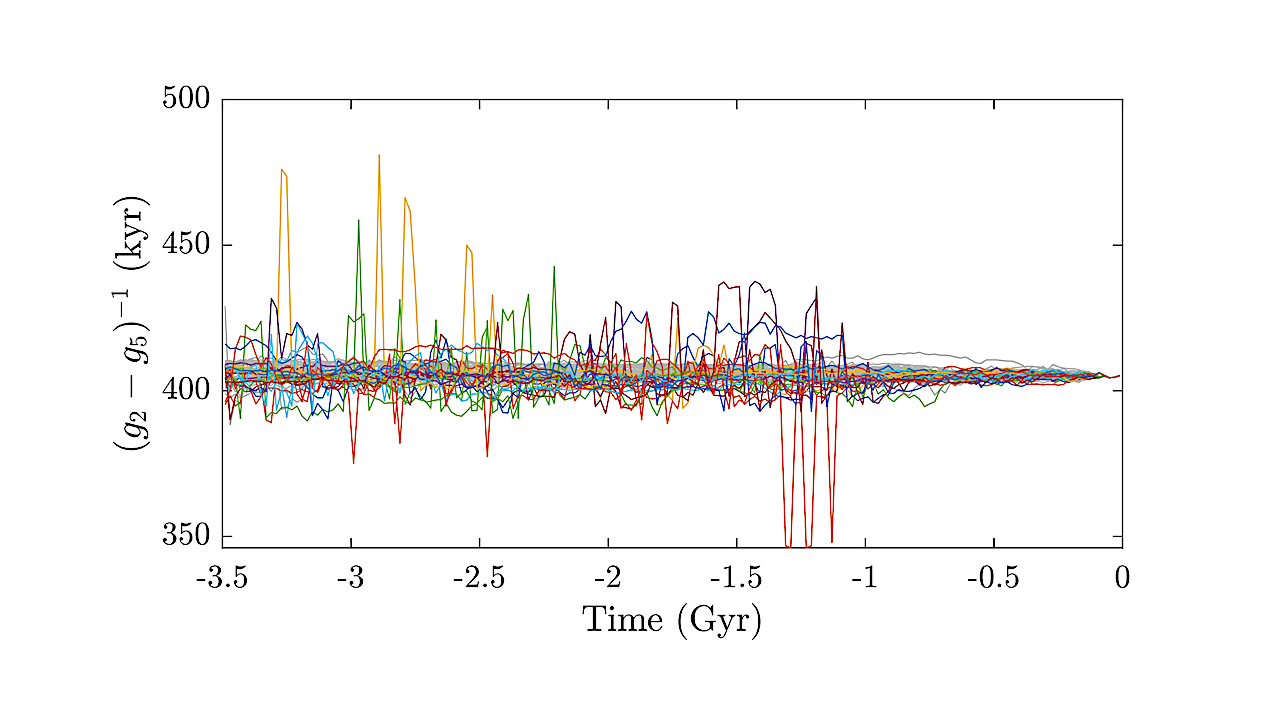
The planets’ gravitational interaction causes rhythmic changes in Earth’s orbital parameters (also called Milanković cycles), which have powerful applications in geology and astrochronology.
For instance, the primary astronomical eccentricity cycle due to the secular frequency term (g2-g5) (~405 kyr in the recent past) utilized in deep-time analyses is dominated by Venus’ and Jupiter’s orbits, aka long eccentricity cycle.
The widely accepted and long-held view is that (g2-g5) was practically stable in the past and may hence be used as a “metronome” to reconstruct accurate ages and chronologies. However, using state-of-the-art integrations of the solar system, we show here that (g2-g5) can become unstable over long time scales, without major changes in, or destabilization of, planetary orbits.
The (g2-g5) disruption is due to the secular resonance σ12 = (g1 – g2) + (s1 – s2), a major contributor to solar system chaos. We demonstrate that entering/exiting the σ12 resonance is a common phenomenon on long time scales, occurring in ~40% of our solutions. During σ12-resonance episodes, (g2-g5) is very weak or absent and Earth’s orbital eccentricity and climate-forcing spectrum are unrecognizable compared to the recent past.
Our results have fundamental implications for geology and astrochronology, as well as climate forcing because the paradigm that the longest Milanković cycle dominates Earth’s astronomical forcing, is stable, and has a period of ~405 kyr requires revision.

Evolution of fundamental solar system frequencies. The g- and s-frequencies (in arcsec y−1 = ” y−1 ) were determined from our solar system integrations using fast Fourier transform (FFT) over consecutive 20-Myr intervals and Earth’s k and q variables (see Section 2). The g- and s-modes are loosely related to the apsidal and nodal precession of the planetary orbits (see Fig. A.1). Solutions including σ12-resonance intervals (∼40%) are highlighted in color, the remaining solutions are displayed in gray. The frequencies g1, s1, and s2 drift most strongly over time owing to chaotic diffusion. In addition, g2 shows large and rapid shifts (spikes) at specific times when the spectral g2 peak splits into two peaks at significantly reduced power during σ12-resonance episodes (see Fig. 5). Alternating maximum power between the two peaks then causes the spikes in g2. As a result, g25 = (g2 − g5) is unstable and weak/absent during σ12-resonance intervals (see Fig. B.1). g5, g6, and s6 (dominated by Jupiter and Saturn) are practically stable over 3.5 Gyr (s5 is zero due to conservation of total angular momentum/existence of an invariable plane, see Fig. A.1). — astro-ph.EP
Richard E. Zeebe, Margriet L. Lantink
Comments: Final revised version in press. The Astronomical Journal
Subjects: Earth and Planetary Astrophysics (astro-ph.EP); Geophysics (physics.geo-ph)
Cite as: arXiv:2403.09332 [astro-ph.EP] (or arXiv:2403.09332v1 [astro-ph.EP] for this version)
Submission history
From: Richard Zeebe
[v1] Thu, 14 Mar 2024 12:20:59 UTC (2,963 KB)
https://arxiv.org/abs/2403.09332
Astrobiology



